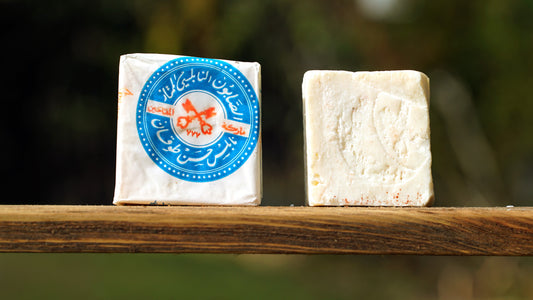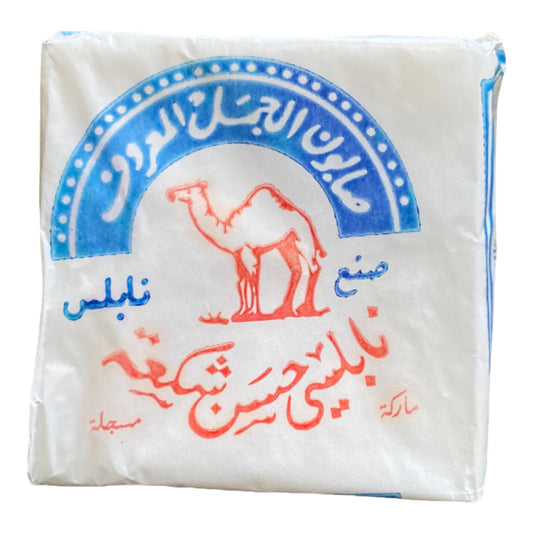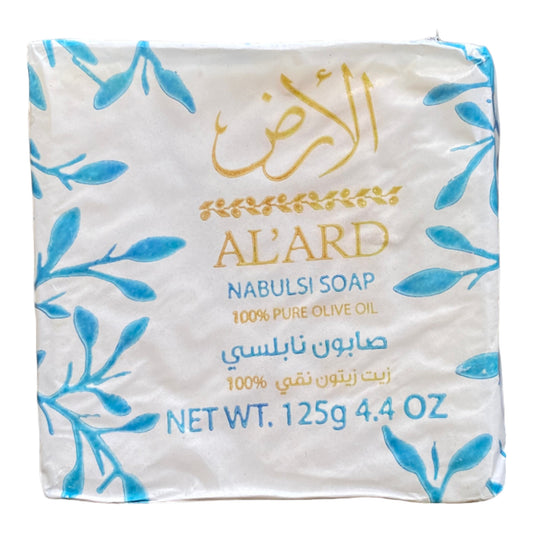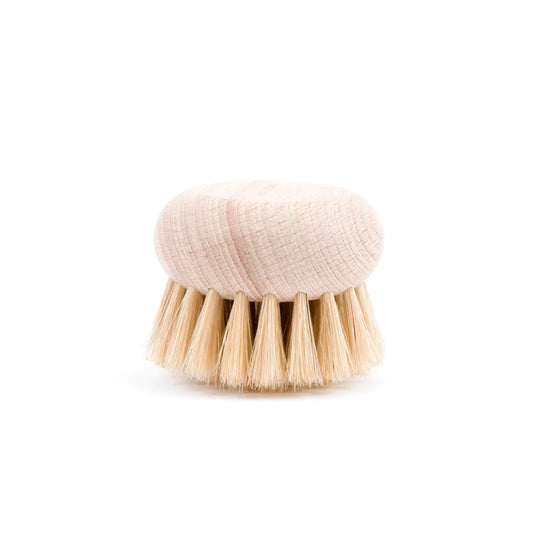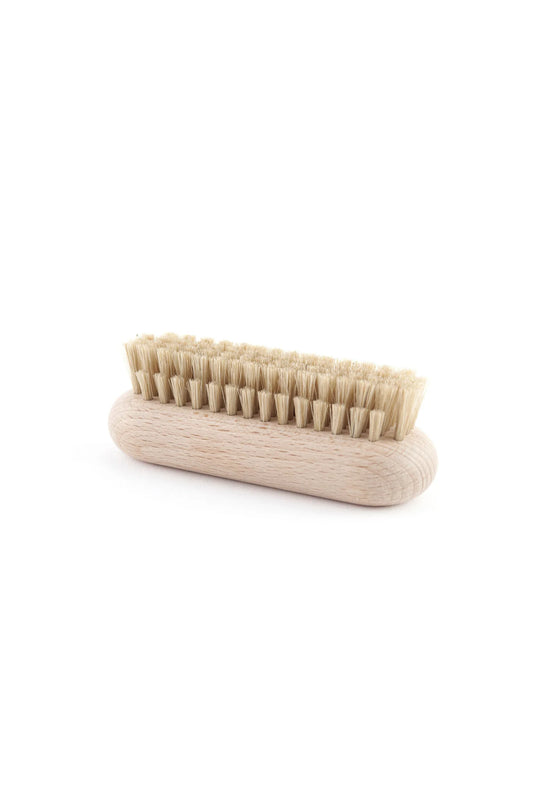I have used it for a few weeks now and it does it job. My skin isn't dried out from it. I am still on the first bar. So, its long lasting. There isn't a strong smell to it. Just a nice clean soup that lasts and doesnt dry out your skin yet still cleans you nicely.

Nablus olive oil soap | صابون نابلسي
100% olive oil soap made traditionally since the 10th century
-
Pure
Nablus soap is made from olive oil, water, and lye. The mix is soaked and cooked slowly in a cauldron through a traditional hot process until all of it has been converted to soap and no lye remains. It is then cooled on a stone floor and cured in chimney-shaped towers for up to 8 months to create a hard, long-lasting, and pure bar. Famously healthy for the skin, Nablus soap is often considered by those who've used it to be the best soap in the world.
-
Medicinal
Nablus soap is known for its smooth lather that washes away without leaving a film, and for its ability to clean without harming. It is prescribed in the Mediterranean for skin ailments such as eczema, psoriasis, rashes, dandruff, acne, cold sores, and itchiness. Just as strong-cleaning as it is mild, it can be used for almost any kind of washing whether household or medical. Its simplicity makes it a special kind of product that can clean a stain as well as heal a wound.
-
Original
Nablus soap continues a soap tradition dating back 4500 years to ancient Syria and Iraq: a hot-cooked soap made solely from olive oil. Europeans adapted the Nablus soap recipe after discovering it during the Crusades, producing the famous vegetable soaps of Castile and Marseilles. Nablus soap is the higher-quality precursor to those better-known descendants.
Nablus Soap Box
Palestinian Soap Cooperative
Shipping included
Share








Nablus Soap
-
Nablus Soap Box
Vendor:Palestinian Soap CooperativeRegular price From $28.00 USDRegular priceUnit price / per -
The Olive (al-Zaytoon; الزيتون)
Vendor:Sabane TbelehRegular price $5.00 USDRegular priceUnit price / per -
The Almond (al-Lauwz; اللوز)
Vendor:Sabane TbelehRegular price $6.00 USDRegular priceUnit price / per -
The Two Keys (al-Mufftahein; المفتاحين)
Vendor:Sabane al-ToukanRegular price $3.50 USDRegular priceUnit price / per -
The Tiger (al-Nimr; النمر)
Vendor:Sabane CanaanRegular price $6.00 USDRegular priceUnit price / per -
The Camel (al-Jamal; الجمل)
Vendor:Sabane al-Shaka'aRegular price $3.50 USDRegular priceUnit price / per -
The Ostrich (al-Na'amah; النعامة)
Vendor:Sabane al-MasriRegular price $6.00 USDRegular priceUnit price / per -
The Land (al-Ard; الأرض)
Vendor:Sabane Beita Women's Development SocietyRegular price $6.00 USDRegular priceUnit price / per -
Nablus Soap 20 Pound Box
Vendor:Palestinian Soap CooperativeRegular price From $215.00 USDRegular priceUnit price / per
Let customers speak for us
from 6860 reviewsNablus Soap Box
I have used it for a few weeks now and it does it job. My skin isn't dried out from it. I am still on the first bar. So, its long lasting. There isn't a strong smell to it. Just a nice clean soup that lasts and doesnt dry out your skin yet still cleans you nicely.
This is the third purchase I have made in a two months. I’m a daughter of Judah’s tribe for my mother’s side. And that smell, just was an amazing travel in time. For many years, my family tried to use the Castilla Soap or more the Marseille Soap which was available in South America. But I soon I found you, I ordered my first 12 box, after that 24 and then the 72 box! Because I can’t find any other product so delicate and pure than yours. My grandmother told me about the same qualities of your products, and here I am, enjoying the most delicious and wonderful soap I ever used and is wonderful bless for my husband’s cancer condition. Thank you for sharing your love through this amazing product 💚
Nablus Soap Box
I have a hard time finding a soap that is dye and fragrance free that I don't dislike the smell of. This soap is the first I've tried that doesn't dry my skin, and smells lovely while being fragrance free. I bought three bars, and I know I'll be a repeat customer. I have also stopped having to buy shaving cream, because this soap lathers so well! My skin has never been happier.
This is a terrific soap. It lasts a really long time and doesn’t melt away like other soaps.
Very nice soap that gets me super clean, gentle on skin. Will be giving these as gifts for Xmas
Very nice soap. Gave a few to friends and they loved them too. Thank you.
I really like this soap. It has a neutral smell for me which I like. My skin feels soft after using. I’m really happy with my purchase and I like that it doesn’t have a lot of ingredients.
I’m so glad I sourced a kiffeyeh with Palestinians Soap Co. the vibrant colors, sturdy cloth, and fine detail work in the patterns makes it feel great to wear and is an eye catching pop of still discernible rainbow.
gentle and lovely!
Just an all around great soap
Everything, from the product review to the ordering process to the product quality of the soap itself, has been flawless and enjoyable. It makes me really happy to know that I am supporting indigenous Artisanal products from Palestine.
I’ve gifted the soap to my friends and family & they love it. It’s mild enough for sensitive skin so my baby uses it. Thanks Again!
Nablus Soap Box
Palestinian Soap Cooperative
Gaza Coffee
Share



-

Soap Making in Palestine
During the European Crusaders' occupation of Palestine, Nablus gained prominence for its production of exceptional soap, which was highly regarded for its quality. The soap-making industry became a royal monopoly,...
Soap Making in Palestine
During the European Crusaders' occupation of Palestine, Nablus gained prominence for its production of exceptional soap, which was highly regarded for its quality. The soap-making industry became a royal monopoly,...
-

Lime, Ash, and Olive: A portrait of the soapmak...
Have you ever wondered what’s in the soap you wash with? If it’s a pump-action bottle of commercial soap there will likely be any number of -ides, -ates and -enes alongside...
1 commentLime, Ash, and Olive: A portrait of the soapmak...
Have you ever wondered what’s in the soap you wash with? If it’s a pump-action bottle of commercial soap there will likely be any number of -ides, -ates and -enes alongside...
1 comment -
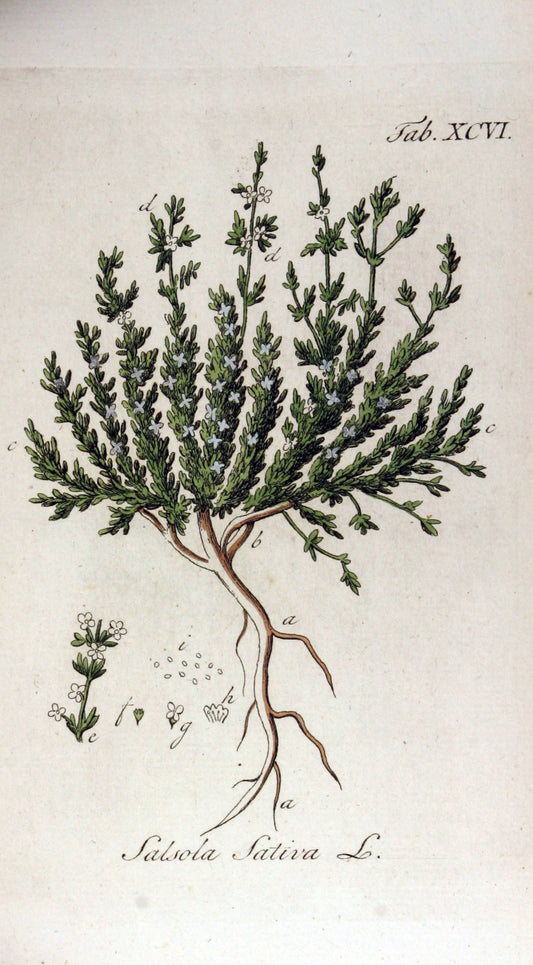
Barilla: A mini history
Without the soda-making qualities of barilla seaweed, there never would have been Nablus or Castile soaps.
4 commentsBarilla: A mini history
Without the soda-making qualities of barilla seaweed, there never would have been Nablus or Castile soaps.
4 comments -

Soap, Class, and State
If Hebron could boast of its glass bracelets, its big he-goat skins, and its fine grapes; if Gaza was still the granary of Palestine; if Lydda was reputed for its...
Soap, Class, and State
If Hebron could boast of its glass bracelets, its big he-goat skins, and its fine grapes; if Gaza was still the granary of Palestine; if Lydda was reputed for its...
How It's Made
Collapsible content

Ingredients
Olive oil, water, and sodium hydroxide. Salt (sodium chloride) is sometimes added if the head soap maker judges that the batch needs it. These ingredients react in the saponification process, and the result is a bar of completely saponified olive oil (sodium olivate).
A minor ingredient of the Nablus soapmaking process is white clay powder that is put down on the fabric that covers the floors where the soap is poured. Virtually all of this clay powder comes off all the bars by the time the soap is packaged.
Another ingredient, only present on one surface of the bars and in minute quantities, is the red chalk used to snap-line the bars into squares. The chalk is made from limestone (calcium carbonate) and its color comes from red iron (iron oxide).
Cooking
Olive oil, water, and soda are added incrementally over the course of several days, while being allowed to soak on low heat from a fire under the cauldron. The head soap maker judges the texture and taste of the batch before calling for it to be moved and poured for measuring and cutting.
Laying, Cutting, & Drying
From the cauldron, porters carry the hot soap by buckets to be poured on a cloth-covered part of the factory floor. White clay powder is tossed onto the cloth to prevent the soap from sticking. When the soap has cooled enough, the soap is measured into cubic squares with a red chalk snapline. The cutter (the secondmost specialized role behind head soapmaker) then cuts the bars into cubes. An imprinter follows with a wooden mallet and hammers the company's logo onto each square.
Once all this is done, the bars are piled into small stacks and lifted onto a wood cart for stacking into hollow skirt-shaped towers for 4 to 6 months of drying during the spring and summer.
Wrapping
After drying, bars are wrapped in vegetable-ink-printed compostable paper and sealed shut with pine sap glue. Finished bars are then packed into boxes and distributed.
Further reading
---Nablus Soap Production: The Decline of an Ancient Heritage by Véronique Bontemps from The Interactive Encyclopedia of the Palestine Question
The production of soap is a very old tradition in the Middle East: it is based primarily on the production of olive oil. At first a domestic production, the soap industry developed in urban centers: the most famous are Aleppo in Syria, Tripoli in Lebanon, and Nablus in Palestine. Throughout the Ottoman period, big families of the urban bourgeoisie acquired the main soap factories located in the city center of Nablus. In the nineteenth century, the soap industry became the dominant economic sector of the city: owning a soap factory became a symbol of wealth, prestige, and urban belonging.
Process of Making Soap
The few Nablus soap factories that have remained operational follow more or less the same manufacturing process (except for some minor changes) that was developed two centuries ago. It is a five-step process—cooking, laying, cutting, drying, and packaging—supported by four different teams of workers.
At the ground floor of the soap factory, olive oil (the main ingredient) mixed with caustic soda and water is placed in a large bowl (halla) and “cooked” for three days. (In the first half of the twentieth century, caustic soda, imported from Alexandria and Europe, replaced the qeli, a plant turned into ashes.) Under the tank, a boiler helps the process of saponification. Once the mixture is ready, the head of the team tastes the soap or crumbles it on his hand to check its texture. Then porters carry the mixture in buckets and pour it on a designated section of the first floor (mafrash), where it dries for a day before being shaped into small cubes, stamped with the brand of the soap factory, and cut by a team of three to four trained workers. A day later, the same workers pile the pieces of soap into pyramids (tananir). The soap then dries for two to three months. Another team packages the soap, wrapping it in a paper with the brand of the soap factory. These workers pack an average of 500 to 1,000 bars of soap per hour.
In the heyday of soap production in Nablus, factories were registered companies with brand names and a printed logo on the soap wrapping paper. These brands were often symbols or names of animals; examples include muftahein (the two keys), al-jamal (the camel), al-na‘ama (the ostrich), al-najma (the star), al-baqara (the cow), al-badr (the full moon), and al-assad (the lion). Slogans were added on the packaging such as al-sabun al-Nabulsi al-mumtaz (Nablus soap extra) or al-ma‘ruf (the well-known).
Decline of Soap Production in Nablus before 1948
By 1930, Nablus soap production had experienced its first important setback. Several reasons are usually given for this decline. Egypt and Syria, which were major markets for Nablus soap (especially Egypt), imposed taxes on imported soap. Nablus soap was competing with soap production in Egypt. The label “Nabulsi” attached to the soap was not protected, and as a result, counterfeiting took place. This, coupled with the rise in the price of pure olive oil after the Great Depression of 1929, contributed to raise the price of Nablus soap, making it difficult for Nablus producers to compete with other imported soaps. In addition, Jewish mechanized industry, which also succeeded to obtain customs benefits from the British Mandate, provided local competition.
This first soap crisis reveals the effects, though indirect, of Jewish immigration in the region of Nablus, hitherto relatively protected from the consequences of the Zionist colonization. In general, the absence of a sovereign state capable of controlling borders and taxes meant that Nablus soap was unprotected, while at the same time the British Mandate granted customs benefits to the Zionists traders, and Egypt and Syria were able to impose barriers to protect their local production.
After 1948, the market of historic Palestine closed; so too did the Egyptian market. The East Bank of the Jordan River (Jordan) became the main market for Nablus soap. Soap producers were gradually forced to import olive oil from Syria and Lebanon, and secondarily from Spain and Italy.
Transformation and Final Decline of the Soap Industry
In the 1950s Hamdi Kan‘an, brother-in-law of the soap producer and trader Ahmad Shaka‘a, introduced in Nablus what was called “green soap,” a soap made from jift (solid remains of first press olives, mainly kernels) oil: it was a lower quality soap used to wash the floor and do the laundry. This was a small revolution. Indeed, the exploitation of this new, much cheaper type of oil allowed less wealthy families to rent soap factories and mass-produce household soap. During the 1970s, production of this “second class” soap (which quickly took the generic name of “Kan‘an”), developed rapidly. But it also helped some soap factory workers to become small manufacturers; they rented soap factories in the old city and started to produce soap. At this time, some soap factories tried to mechanize and “develop” the Nablus soap in its form, packaging, and ingredients. Another change (a consequence of the Israeli occupation of 1967) is that all kinds of oils started to be used.
Despite the attempts by some in the soap industry to transform production and adapt to the changing circumstances, the soap industry experienced a steady regression during the second half of the twentieth century, and the first intifada marked the final decline. Small factories producing green soap were already being marginalized by the introduction of detergents and washing machines and cheaper foreign products (like Lux and Palmolive). They could not compete, nor could they afford the new taxes imposed on the soap: their lack of capital prevented them from maintaining their production. Moreover, since the first intifada, soap production became harder to maintain, because the old city was the target of Israeli attacks, and many soap factories thus closed in the 1990s.
In summary, cheaper foreign products as well as the introduction of new consumption patterns brought about the decline of the soap industry in Nablus. Of the more than thirty soap factories in the old city of Nablus, several were damaged by the Israeli invasion of 2002 and two of them completely destroyed; most of the rest have been abandoned or put to other uses. For example, the Arafat soap factory is being developed into a cultural center for children; some producers are using perfumes and mechanization to produce new soaps to keep the tradition of soap making in Nablus alive. Since 2007 only two soap factories have remained functional in Nablus, and they belong to the Tuqan and Shaka‘a families, who keep them as a heritage. These factories export the vast majority of their production to Jordan, taking advantage of long-standing relationships with the distributors on the East Bank of the river and the importance of the Palestinian population in Jordan. From there, a small part of the production is sent to Kuwait and the Gulf.
Selected Bibliography:
Bahjat, Mohammad, and Rafiq Tammimi. Wilayat Bayrut: al-qism al-janubi [The Province of Beirut: Its Southern Part]. Beirut: al-Iqbal Press, 1916.
Bontemps, Véronique. “Soap-Factories in Nablus. Palestinian Heritage (Turâth) at the Local Level.” Journal of Balkan and Near-Eastern Studies 14, no.2 (2012): 279–295.
Bontemps, Véronique. Ville et patrimoine en Palestine. Une ethnographie des savonneries de Naplouse. Paris: Karthala/IISMM, 2012.
Doumani, Beshara. Rediscovering Palestine, Merchants and Peasants in Jabal Nablus (1700–1900). Berkeley and Los Angeles: University of California Press, 1995.
Graham-Brown, Sarah. “The Political Economy of the Jabal Nablus, 1920–1948.” In R. Owen, ed., Studies in the Economic and Social History of Palestine in the Nineteenth and Twentieth Centuries. Carbondale: Southern Illinois University Press, 1982.
Jaussen, Antonin. Naplouse et son district. Paris: Geuthner, 1927.
Sharif, Husam. Sina‘at al-sabun al-Nabulsi [The Nabulsi Soap Industry]. Nablus: Palestinian Authority: Municipality of Nablus, 1999.
Taher, Ali Nusuh. Shajarat al-zaytun. Tarikhuha, zira'atuha, amraduha, sina‘atuha [The Olive Tree: Its History, Culture, Diseases and Production]. Jaffa, 1947.
Fabrics
Nablusi kufiyas and Turkish and European fabrics which complement traditional olive oil soap.
-
Nabulsi Kufiya
Vendor:Nablus Textile CompanyRegular price $20.00 USDRegular priceUnit price / per -
Nabulsi Red Kufiya
Vendor:Nablus Textile CompanyRegular price $20.00 USDRegular priceUnit price / per -
Nabulsi Rainbow Kufiya
Vendor:Nablus Textile CompanyRegular price $25.00 USDRegular priceUnit price / per -
Nabulsi Olive Kufiya
Vendor:Nablus Textile CompanyRegular price $40.00 USDRegular priceUnit price / per -
Hammam Towel (Cotton)
Vendor:Turkish Towel CollectionRegular price $40.00 USDRegular priceUnit price / per -

 Sold out
Sold outHammam Towel (Cotton and Linen)
Vendor:Turkish Towel CollectionRegular price $45.00 USDRegular priceUnit price / per
Accoutrements
Handmade and all-natural accessories to use with olive oil soap.
-
Body Brush
Vendor:Andrée JardinRegular price From $20.00 USDRegular priceUnit price / per -
Nail Brush
Vendor:Andrée JardinRegular price $18.00 USDRegular priceUnit price / per -

 Sold out
Sold outMassage Brush
Vendor:Andrée JardinRegular price From $28.00 USDRegular priceUnit price / per -

 Sold out
Sold outHandled Dish Brush
Vendor:Andrée JardinRegular price From $6.00 USDRegular priceUnit price / per -
Palestinian Soap Cooperative gift card
Vendor:Palestinian Soap CooperativeRegular price From $10.00 USDRegular priceUnit price / per

A Nablus Soap Novel
“As beautifully detailed as a piece of Palestinian embroidery, this bold, vivid novel will speak to readers across genders, cultures, and identities.” —Diana Abu-Jaber, author of Fencing with the King










